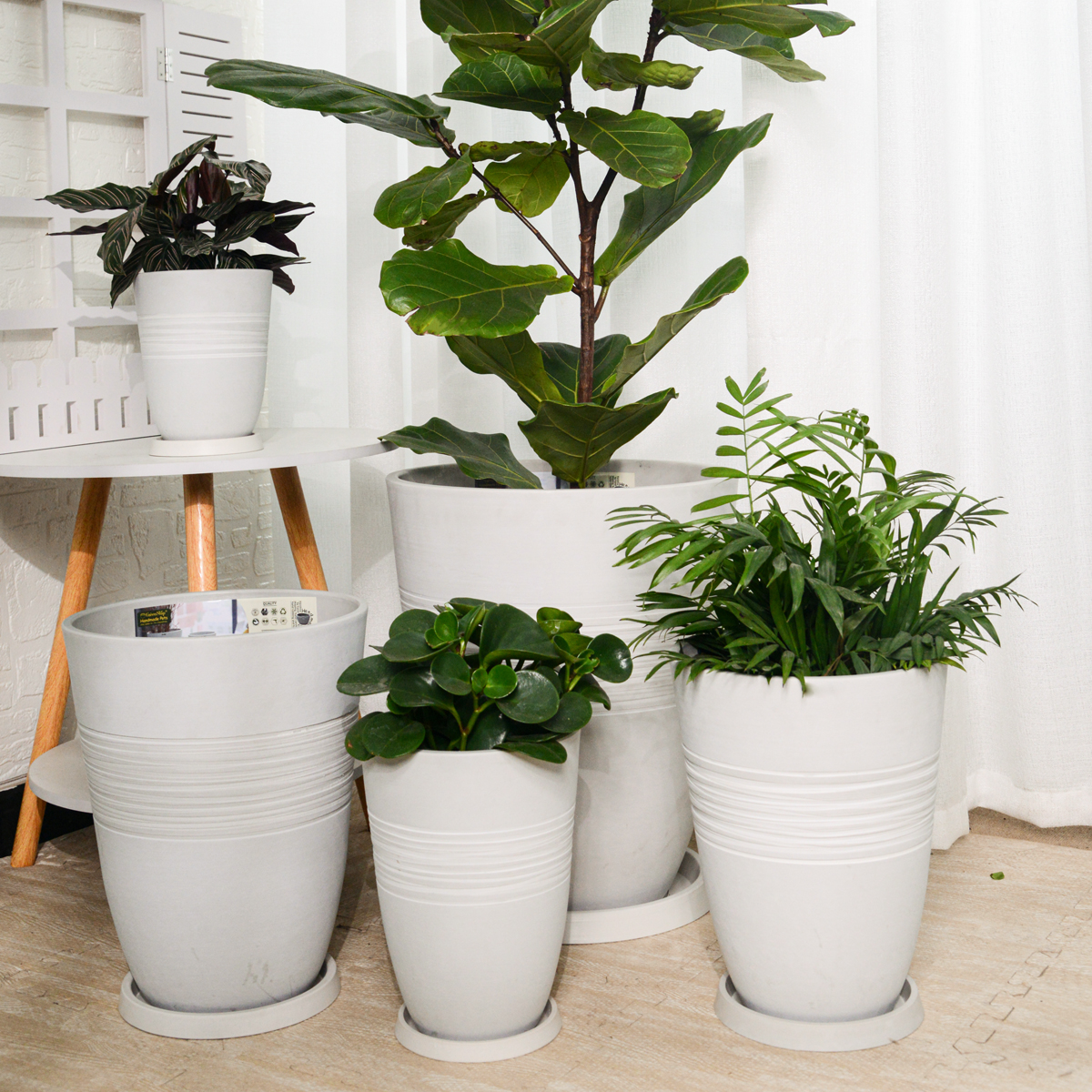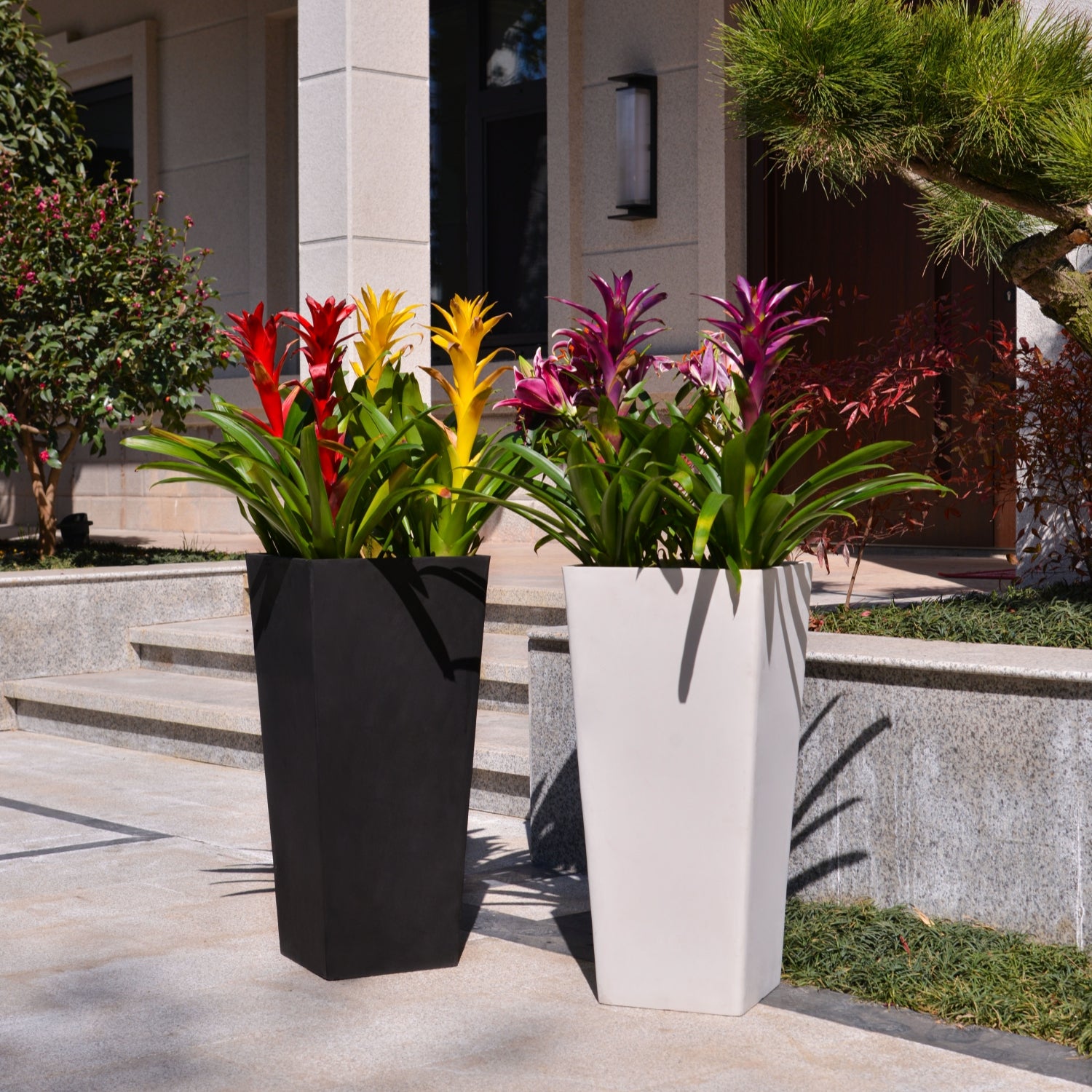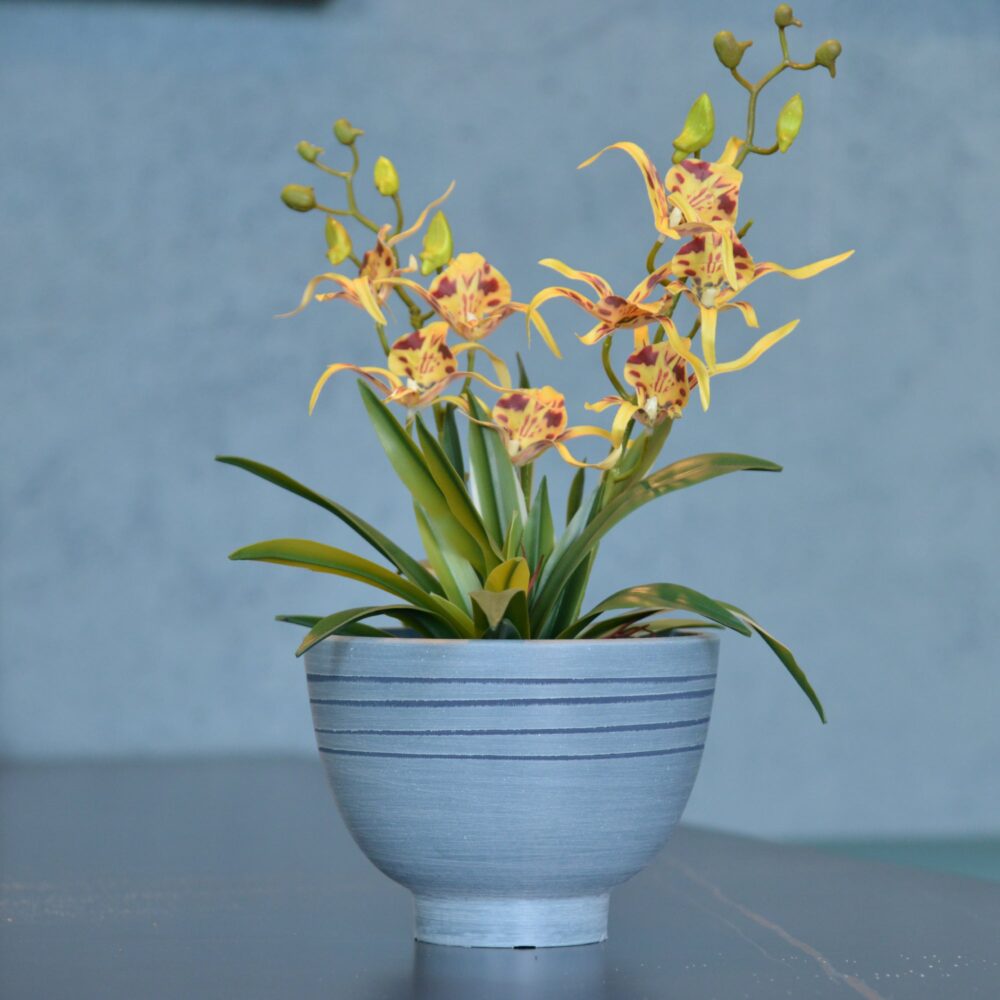ZZ Plant (Zamioculcas zamiifolia): The Ultimate Guide to Indoor Care, Pots, and Propagation
Are you looking for a virtually indestructible houseplant that thrives on neglect and adds a touch of modern elegance to your home? Look no further than the ZZ Plant, scientifically known as Zamioculcas zamiifolia. This incredibly resilient plant, native to Eastern Africa, is a favorite among beginners and seasoned plant enthusiasts alike due to its easy-going nature and striking, glossy foliage.
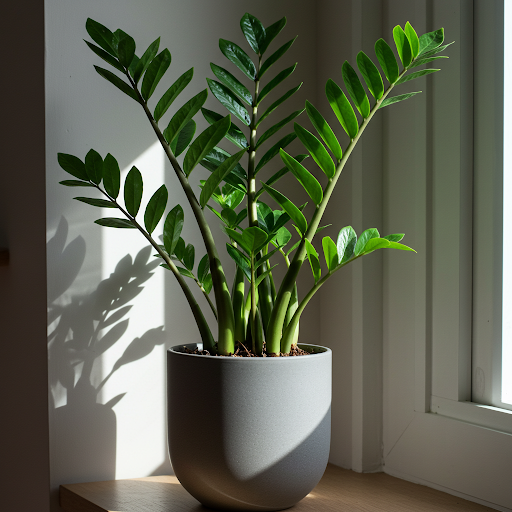
ZZ Plant
Ideal Indoor Growing Conditions:
- Light: ZZ Plants are famed for their tolerance of low-light conditions, making them perfect for offices, apartments, and rooms with minimal natural light. While they thrive in bright, indirect light, they will also do well in low-light environments, though growth may be slower. Avoid direct sunlight, which can scorch their leaves.
- Soil: They prefer well-draining soil. A cactus or succulent mix works well, or you can use a general-purpose potting mix amended with perlite or sand to improve drainage. Good drainage is crucial to prevent root rot.
- Watering: ZZ Plants are drought-tolerant champions, thanks to their rhizomes that store water. Overwatering is their biggest enemy. Water thoroughly only when the soil is completely dry. During the growing season (spring and summer), this might be every 2-4 weeks, and even less frequently in the fall and winter. When in doubt, underwater rather than overwater.
- Temperature: Average room temperatures between 65°F to 75°F (18°C to 24°C) are ideal. ZZ Plants can tolerate slightly warmer and cooler temperatures, but avoid exposing them to temperatures below 50°F (10°C).
- Humidity: ZZ Plants are not fussy about humidity levels and do well in average indoor humidity. They can tolerate dry air, which is another reason they are so well-suited for indoor environments.
Planting ZZ Plants:
- Starting from Rhizome Divisions or Cuttings: ZZ Plants can be propagated from rhizome divisions, leaf cuttings, or stem cuttings. However, propagation from leaf cuttings is a very slow process. Rhizome division during repotting is the most common and efficient method.
- Planting Time: Repotting or planting is best done in spring or early summer, at the start of the growing season.
Choosing the Right Pots:
- Suitable Pot Types: Any pot type is suitable as long as it provides excellent drainage. Terracotta pots are a great choice because they are porous and help the soil dry out more quickly, reducing the risk of overwatering. Plastic or glazed ceramic pots can also be used, but be extra cautious with watering.
- Drainage: Drainage is paramount for ZZ Plants. Ensure your chosen pot has at least one drainage hole at the bottom to allow excess water to escape.
- Pot Size: Select a pot that is only slightly larger than the root ball. ZZ Plants prefer to be slightly root-bound. Repotting should only be done every 2-3 years, or when the plant has clearly outgrown its current container. Over-potting can lead to excess moisture retention and root rot.
- Potting Mix: Use a well-draining potting mix as mentioned earlier (cactus/succulent mix or general-purpose mix amended for drainage).
Care Tips for Thriving ZZ Plants:
- Fertilizing: ZZ Plants are light feeders and do not require frequent fertilization. Fertilize sparingly, about 2-3 times during the growing season (spring and summer), with a balanced liquid fertilizer diluted to half strength. Over-fertilizing can lead to salt buildup in the soil.
- Pruning: Pruning is rarely needed. You can trim off any yellow or brown leaves at the base of the stem to maintain a tidy appearance.
- Repotting: Repot every 2-3 years or when the plant becomes root-bound. Spring is the best time for repotting.
- Pest and Disease Control: ZZ Plants are generally pest and disease-resistant. However, they can occasionally be affected by common houseplant pests like spider mites or mealybugs. Treat any infestations promptly with insecticidal soap or neem oil. Root rot is the most common issue, usually caused by overwatering.
- Toxicity: ZZ Plants are considered toxic if ingested, as they contain calcium oxalate crystals. Keep them out of reach of children and pets who might be tempted to chew on the leaves.
In summary, the ZZ Plant (Zamioculcas zamiifolia) is an exceptional choice for anyone seeking a low-maintenance, stylish indoor plant. Its ability to thrive in low light and tolerate infrequent watering makes it incredibly forgiving and perfect for busy individuals or those new to plant care. By providing well-draining soil, appropriate pots, and avoiding overwatering, you can easily enjoy the enduring beauty of the ZZ Plant in your home for years to come.
For more detailed botanical information, you can visit the Wikipedia page on Zamioculcas zamiifolia. Here’s a科普 article about Zamioculcas zamiifolia, optimized for search engines and informative for home gardeners:
ZZ Plant (Zamioculcas zamiifolia): The Ultimate Guide to Growing Indoors
The ZZ Plant, scientifically known as Zamioculcas zamiifolia, is a remarkably resilient and attractive houseplant, perfect for both beginners and seasoned plant enthusiasts. Also known as the Zanzibar Gem, Zuzu plant, aroid palm,1 eternity plant, or emerald palm, this plant is native to Eastern Africa and is celebrated for its glossy green foliage and easy-care nature. If you’re looking for a low-maintenance plant that can thrive indoors, the ZZ Plant is an excellent choice.
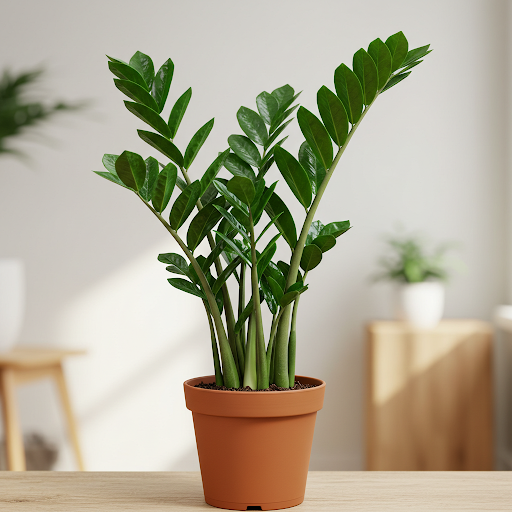
ZZ Plant
Ideal Indoor Growing Conditions:
- Light: ZZ Plants are incredibly adaptable to different light conditions. They thrive in medium to bright indirect light but can also tolerate low indirect light conditions. Avoid intense, direct sunlight, which can scorch their leaves.
- Soil: ZZ Plants need well-draining soil to prevent root rot. A cactus or succulent potting mix works well, or you can use a general-purpose potting mix amended with perlite or sand to improve drainage.
- Watering: One of the ZZ Plant’s most appealing traits is its drought tolerance. Water every 2-3 weeks, allowing the soil to dry out completely between waterings. Overwatering is a much bigger problem than underwatering for ZZ Plants. In low light conditions, you’ll need to water even less frequently.
- Temperature: ZZ Plants are comfortable in typical indoor temperatures, ideally between 20-38°C (68-100°F). They are not cold-hardy and should be protected from temperatures below 10°C (50°F).
- Humidity: ZZ Plants are not demanding when it comes to humidity and can tolerate average household humidity levels.
Planting Your ZZ Plant:
- Starting from Rhizomes or Plants: ZZ Plants are typically propagated from rhizome divisions or leaf cuttings, but it’s easiest to purchase established plants from garden centers.
- Repotting: ZZ Plants are slow growers and don’t need frequent repotting. Repot every 2-3 years, or when the plant becomes root-bound, into a slightly larger pot. Spring or early summer is the best time for repotting.
Choosing the Right Pots:
- Suitable Pot Types: Select pots that provide good drainage. Terracotta pots are excellent as they help the soil dry out more quickly, reducing the risk of overwatering. Plastic pots can also be used, but be extra cautious not to overwater.
- Drainage: Ensure your chosen pot has drainage holes at the bottom to allow excess water to escape.
- Pot Size: Choose a pot that is appropriately sized for the plant. For young ZZ Plants, a 6-8 inch pot is a good starting size. As the plant grows, you can gradually increase the pot size. Avoid drastically oversized pots, as they can retain too much moisture.
- Potting Mix: Use a well-draining potting mix as mentioned earlier. Ensure it’s lightweight and allows for good aeration around the roots.
Essential Care Tips:
- Watering Schedule: Stick to a strict “less is more” watering approach. Allow the soil to become completely dry between waterings. Check the soil moisture by inserting your finger about 2 inches deep into the soil.
- Fertilizing: ZZ Plants are not heavy feeders. Fertilize sparingly, every 2-3 months during the growing season (spring and summer) with a balanced liquid fertilizer diluted to half strength. Over-fertilizing can lead to salt build-up in the soil, which can harm the plant.
- Pruning: Pruning is rarely needed for ZZ Plants. You can remove any yellow or brown leaves at the base of the stem to keep the plant looking tidy.
- Pest and Disease Control: ZZ Plants are generally pest and disease-resistant. However, they can occasionally be affected by common houseplant pests like spider mites or mealybugs. Treat any infestations promptly with insecticidal soap or neem oil. Root rot can occur if the plant is overwatered.
In Summary:
The ZZ Plant is an exceptional choice for anyone seeking a low-maintenance, air-purifying, and visually appealing indoor plant. Its tolerance for neglect and varied conditions makes it ideal for busy individuals or those new to plant care. By providing well-draining soil, infrequent watering, and indirect light, you can enjoy the enduring beauty of the ZZ Plant in your home for years to come.
For more in-depth information, you can explore the Wikipedia page on Zamioculcas.
Please note: While ZZ Plants are incredibly hardy, they are considered toxic if ingested, so keep them out of reach of children and pets.
Let me know if you have any other questions.
Planter 6 in W / 8 in W / 12 in W Indoor or Outdoor Plants, Modern Decorative Plant Pots with Drainage Hole, Decorative Flower Pots
By greenship-seo|2025-02-06T13:43:53+00:00January 16, 2025|Categories: Hand-carving Series|Tags: Decorative Flower Pots|
KC2-11VH
By greenship|2024-08-16T06:19:28+00:00August 16, 2024|Categories: Hand-carving Series|
KC2-11V
By greenship|2024-08-16T05:39:50+00:00August 16, 2024|Categories: Hand-carving Series|
GreenShip 27inch Tall Planters for Porch, Large Outdoor Planter Pots with Drainage Hole
By greenship-seo|2025-04-10T06:27:21+00:00April 7, 2025|Categories: Hand-carving Series|Tags: Decorative Flower Pots|
Modern Plant Pots丨Planter for Indoor Plants,8 inch or 10 inch Plant Pots with Drainage Hole,Decorative Flower Pots
By greenship-seo|2025-04-10T08:32:55+00:00January 7, 2025|Categories: Hand-carving Series|Tags: Decorative Flower Pots, Self-Watering Pots|
8 inch/10 inch Planter Indoor Plants, 2 Pack Modern Decorative Plant Pots with Drainage Hole, Cute Bowl Shape Flower Pots
By greenship-seo|2025-04-10T08:03:42+00:00January 9, 2025|Categories: Hand-carving Series|Tags: Decorative Flower Pots, Self-Watering Pots|


